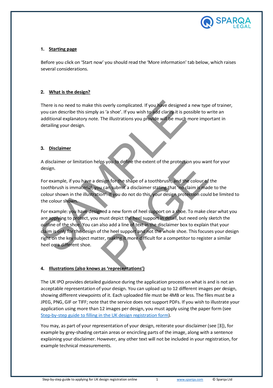 Registered design protection is a way of protecting your original design from being copied by someone else. Registering a design gives you enhanced protection, compared to relying on unregistered design rights. You can apply to register a design in the UK, the EU or internationally.
Registered design protection is a way of protecting your original design from being copied by someone else. Registering a design gives you enhanced protection, compared to relying on unregistered design rights. You can apply to register a design in the UK, the EU or internationally.
This blog sets out the benefits and limitations of registered design protection, and how to recognise a registered design right. The next blogs in our series will look at how to register a design and what unregistered design rights are.
You can find our step-by-step guide to applying for UK design registration here. You can also purchase this guide as part of our Protecting IP and Confidential Information toolkit.
What is registered design protection
Registered design protection is a way of protecting your design and preventing others from using it. During the period your design is registered, no one else can make, offer, import, export, market, stock or otherwise use it without your permission. This applies not only to anything identical to your design but also to anything that gives the same overall impression to someone who has a good knowledge of the market.
Registered designs are publicly available on the searchable UK IPO Register (if registered in the UK) and/or the EU IPO Register. Your competitors will be able to see your registered design/s and the date from which your registration started.
However, note that others will still be able to use your design after you have registered it in certain special cases (for example, where your design is used for teaching or experimental purposes or for private, non-commercial purposes).
Advantages of registered design protection
The main advantage of registering your design is that you obtain broader rights to stop competitors from using designs that are too similar to yours, whether they have directly copied the design from you or not. If your design right is left unregistered, only designs which have been directly copied from yours will infringe upon your design right.
Registering a design also offers the longest period of protection. The initial protection period is 5 years from the registration date and you can renew the registration protection every 5 years up to a total of up to 25 years. See our Q&A for guidance on renewing registered design protection. Unregistered design protection, on the other hand, only lasts for 15 years from the end of the calendar year when your design was first created or 10 years from the end of the calendar year of it being made available for sale, if that expires first. Our Q&A sets out the duration of unregistered design rights in further detail.
There are other commercial advantages of registered design protection. Registering your design:
- gives you certainty of ownership over your design; and
- makes it easier to resolve any disputes in relation to your design.
Limits of registered design protection
There are some limitations to registered design protection which you should consider when deciding whether to register your design:
- Registration takes time and money and may not be suitable if you trade in a fast-moving industry where designs may be fairly disposable.
- Your design will only be protected in the place where you registered it. An EU registration will protect your design throughout the EU; a UK registration is limited in effect to the UK.
- A successful registration of your design is not necessarily conclusive. Neither the UK Intellectual Property Office nor the EU Intellectual Property Office will check other registered designs to see if your design is too close to a competitor’s before registering it. A competitor can apply to have your registration invalidated if they can prove that they previously registered a very similar design.
- Not all designs are registrable. See our Q&A for types of designs which cannot be registered in either the UK or the EU.
Recognising a registered design right
To check whether someone already has a right over a particular design, you can search the relevant design registers to see whether the design has been registered in the UK, the EU or internationally. See our Q&A on how to conduct these searches effectively.
Note that even if a design is not registered, someone may still have an unregistered right to it. Therefore, you should do market research before progressing with your design, to check that you aren’t copying anyone else’s work. See our Q&A for further guidance on conducting market research and minimising the risk of inadvertently copying another’s work.
The content in this article is up to date at the date of publishing. The information provided is intended only for information purposes, and is not for the purpose of providing legal advice. Sparqa Legal’s Terms of Use apply.

Marion joined Sparqa Legal as a Senior Legal Editor in 2018. She previously worked as a corporate/commercial lawyer for five years at one of New Zealand’s leading law firms, Kensington Swan (now Dentons Kensington Swan), and as an in-house legal consultant for a UK tech company. Marion regularly writes for Sparqa’s blog, contributing across its commercial, IP and health and safety law content.






